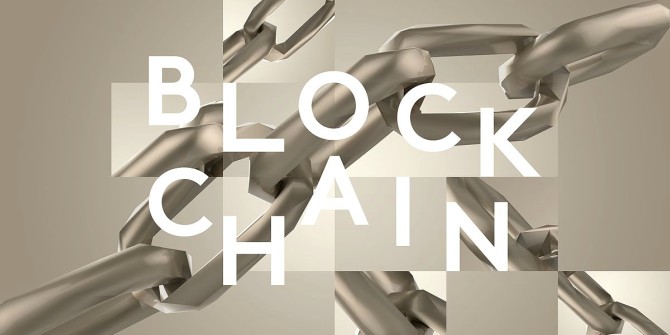
Advocates of blockchain technology often expound its ability to deliver a disruptive layer of efficiency to existing industries that provide consumers goods and services. They might speak of how, by removing centralised trust from the equation of transaction verification, blockchain-based systems will provide a means of disintermediation that could save industries untold sums of capital that is otherwise lost to third-party fees.
One facet of the technology remains a constant; to make the most of blockchain systems they must be capable of scaling out to meet the needs of the ever-increasing number of participants with which they interface. Tackling the issue of scalability has become critical among the goals of blockchain developers and advocates.
Big institutions are already paying attention to the blockchain revolution; huge coalitions have risen up to share research and develop blockchain technology for the private sector. One must look no further than the likes of the growing blockchain conglomerates Enterprise Ethereum Alliance and R3, both of whom encompass major banks, and industry leaders. These companies are working together to deliver a scalable business-competent blockchain platform.
Around the globe, governments have also taken notice of blockchain technology. Recently Russian President Vladimir Putin spoke out in favour of a state-sponsored CryptoRuble, and Managing Director of the International Monetary Fund (IMF) Christine Lagarde has even hinted of late that the IMF may consider underpinning its Special Drawing Right, an internal reserve currency, by a basket of cryptocurrency assets.
Major global powers are investigating blockchain technology as it can be applied to various internal agencies as a means of bolstering infrastructure. Governments from countries including America, Australia, China, Estonia, Japan, Russia, Senegal, Singapore, Switzerland, and more have explored what can be offered by integrating blockchain-powered platforms.
With all eyes falling on blockchain systems, the world is in the midst of a new kind of space race; a heat to deliver to blockchains the transaction scalability necessary so that those systems can compete with today’s expensive and fee-laden central bank networks. The methods by which blockchain technology reaches this pinnacle may vary, however, in terms of recent breakthroughs, one of the more novel approaches to blockchain scalability that stands out is an idea known as sharding.
Sharding makes the most out of the blockchain networks by breaking them up into different segments, or shards. These shards work together to process transactions in parallel, and thus faster than current deployments of blockchain networks such as bitcoin and ethereum. This could unlock a greater potential of blockchain networks’ processing capacity to possibly scale to meet the needs of increasing number of participants and applications.
With such a linear fashion of adaptation to raise transaction throughput as nodes are added, the network can easily grow. If a shared network were to have enough nodes, the blockchain network making use of the sharding protocol could be capable of rivalling today’s transaction system throughput standards. With a new blockchain architecture based on sharding, blockchain technology’s distributed processing and storage could scale massively outward and become a foundational proving ground for global systems capable of taking advantage of such a technological revolution.
Industries are making a conscious effort to keep pace as the blockchain ecosystem evolves. Gradually but steadily, collaboration becomes the new sexy even among once competitive entities. They are increasingly acting as cohorts in collaborative endeavour to reach the common goal of a scalable blockchain platform for their use cases.
Eventually a team will forge the missing link, bridging the scalability gap for decentralized, resilient to attacks and failures, and high throughput on a blockchain network. Whether this is in the form of a permission-less outfacing public blockchain implementation, or a private deployment of a blockchain platform, or a combination of several components and deployments, the results are likely to have a ripple effect.
Sharding isn’t the only scalability protocol out there, and the developers of various blockchains, like those of bitcoin and ethereum, have been diligent as they roll out evolutionary changes to their platforms. It’s thanks to the efforts of these developers that start-ups and industry incumbents alike may develop in an emerging and robust space that is constantly undergoing systemic upgrades.
Is sharding the only missing piece in the puzzle? Finding the solution to this question is complicated, but the answer ultimately depends on the researchers and projects testing and deploying sharding protocols. With some of the best teams and the brightest minds working on this technology, we will find out in the coming months if sharding is the technological solution that delivers ultimate scalability to blockchain networks.
♣♣♣
Notes:
- This blog post gives the views of its author, not the position of LSE Business Review or the London School of Economics.
- Featured image credit: Blockchain-illustrasjon, by
- When you leave a comment, you’re agreeing to our Comment Policy.
 Xinshu Dong is a scientist and practitioner in building secure systems, ranging from blockchains to web browsers and applications. He was a technical lead for several national cybersecurity projects. The outcome of his research has been published at top international conferences. Xinshu received a PhD in computer science from the National University of Singapore (NUS) in 2013. He is currently leading the Zilliqa team, who are developing a new public blockchain for high-throughput applications based on the technology of sharding that was originally proposed by their research done at NUS.
Xinshu Dong is a scientist and practitioner in building secure systems, ranging from blockchains to web browsers and applications. He was a technical lead for several national cybersecurity projects. The outcome of his research has been published at top international conferences. Xinshu received a PhD in computer science from the National University of Singapore (NUS) in 2013. He is currently leading the Zilliqa team, who are developing a new public blockchain for high-throughput applications based on the technology of sharding that was originally proposed by their research done at NUS.





